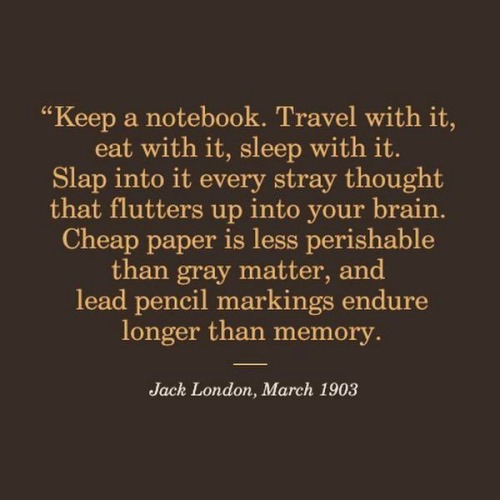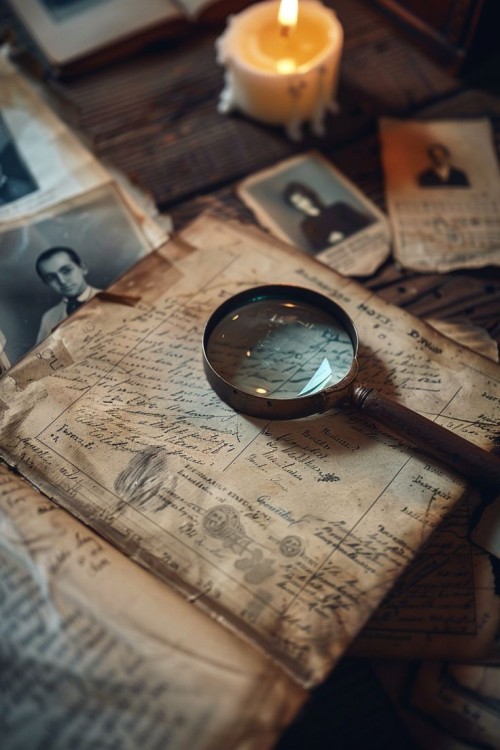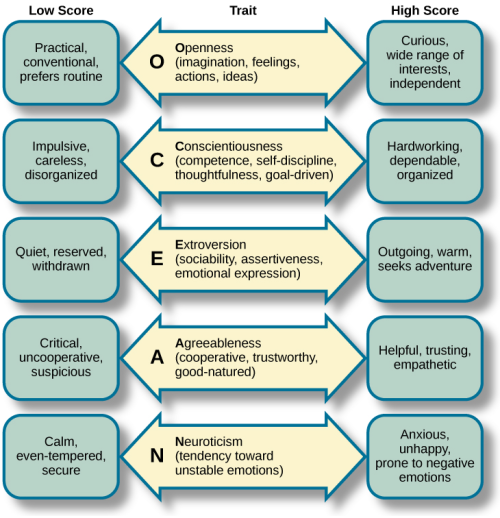Writing Notes - Tumblr Posts

Dark academia

Writing Aesthetic

F. Scott Fitzgerald







Writing Aesthetic






Dark academia coffee




Classic academia

Jack London




Notebook aesthetic







Academia handwriting





Dark Academia vibes





Coffee and dream





Telling story

Old Notebook
Writing Notes: Horror
Horror is a genre within creative writing that relies on one thing: instilling a sense of fear in the reader.
The horror genre is multifaceted—there is a kind of horror for every kind of person.
For some, the most effective scare is the idea of being trapped in a haunted house. For others, it’s being chased by a serial killer on Halloween.
Some of the best horror comes from scary things that can manipulate an audience’s feelings, creating a sensation of uneasiness and fear that stretches beyond consciousness and permeates deep within the psyche.
Horror writing is sometimes categorized within the broader category of thrillers, but not all horror follows the thriller structure.
Classic horror fiction—whether expressed as a novel, novella, short story, or film—will tap into topics that reliably frighten most humans.
Common topics include ghosts, werewolves, vampires, zombies, serial killers, murderers, and the fear of the unknown.
These horror tropes can often devolve into clichés.
A downside of horror’s popularity is that many horror books and movies recycle old content in non-creative ways, but when properly executed, horror stories can thrill audiences and even provide commentary on the human condition.
Horror Subgenres
1. Apocalyptic - In this subgenre, the world is ending or society is collapsing. When this happens, it’s usually because of some creature, demon, or religious event (while climate-oriented apocalypses are more sci-fi).
2. Body Horror - Involves the mutilation, experimentation, or violation of the human body. It can focus on disease, dismemberment, infestation, sexual acts, or a complete transformation of the physical form.
3. Comedy - Horror and comedy seem so at odds with each other, but they work so well together (kind of like spice and chocolate). A trademark of comedy horror is how the protagonist somewhat stumbles through the story, arriving at the end through luck and ridiculous happenstance rather than skill or growth.
4. Cosmic/Lovecraftian - With its origins largely attributed to H.P. Lovecraft, cosmic horror makes us feel small against a threat that is ancient, massive, and incomprehensible. Cosmic horror looks at intergalactic entities, ancient gods, the machinations of the universe, and how helpless we are against it all.
5. Dark Fantasy - Another crossover, this time with the fantasy genre. In dark fantasy, you have elements of magic, fictional creatures or worlds, and everything else that makes fantasy great, plus you add in a good dose of scares. This can also involve other subgenres, like body horror.
6. Dark Romance - Another crossover genre, dark romance takes the feel-good romance genre and makes it horrific. While this subgenre can simply include morally questionable characters and a grittier tone than most romance, it can also include kidnapping, forced confinement, BDSM, psychological and physical abuse, and sexual violence or sex where there is no consent. Bear in mind that it still needs to include the tenants of romance stories, though.
7. Extreme Gore - Not for the faint of heart, this subgenre includes books that have detailed torture scenes or otherwise disturbing and depraved acts. This genre is all about shocking your audience with how awful your characters act or are treated.
8. Folk Horror - Embraces urban legends and folktales. These range from old pagan gods in the woods to weird rituals performed by isolated groups or villages. Sometimes there is a supernatural element to them, even if the “supernatural” is simply perceived or believed by some characters (e.g., Midsommar).
9. Found Footage/Documentaries - Though this subgenre is more common in films than books, found footage and documentary horror stories are about a crew of people recording their experiences, usually unaware of the true danger they are about to face.
10. Gothic - The great-grandparent of modern horror, gothic horror is the brooding, atmospheric genre containing what most of us would consider classics (e.g., Dracula and Frankenstein). Sometimes you throw in a dash of romance, but these tales tackle topics like death and mortality.
11. Post-Apocalyptic - After some world-ending disaster, how horrifying have things become? Post-apocalyptic horror shows us a world without rules or structure. It can contain unrealistic elements (zombies, demons, etc.) or realistic possibilities (cannibals, gangs, and so on).
12. Psychological - Places the spotlight on trauma, mental health, manipulation, phobias, and everything else that causes you to become stressed and anxious. Home invasion stories (i.e., The Strangers) fall under this subgenre.
13. Slasher - Involves violent horror that is more about a single killer stalking and eventually killing a group of people (traditionally targeting teens and using a blade). This subgenre isn’t necessarily as violent or gory as others, but uses suspense to make the reader hold their breath.
14. Splatterpunk - Is known for its disregard of limits when it comes to violence—both physical and sexual. Gore and depravity are grossly abundant.
15. Supernatural/Paranormal - Some folks separate these two subgenres into different categories, but there is so much overlap that they’re basically the same. If you have to, think of supernatural horror as stories that involve werewolves, witches, vampires, and other monsters. Paranormal horror, on the other hand, involves ghosts, demons, and haunted houses.
Tips for Writing Horror
1. Read more horror. There’s no better way to understand what a good story looks like than to read one for yourself. Read as much as you can so you are aware of what other horror writers are doing.
2. Focus on your own fears. Much like comedy, horror benefits from authenticity. So get personal: If you can scare yourself, you can probably scare an audience.
3. Create three-dimensional characters. Write characters whose character flaws feed the action of the story. All good literature and film contains well-wrought characters with desires, emotions, and a backstory. The more human you make the characters of your story or screenplay, the more their missteps and bad choices will resonate with an audience.
4. Recognize that the real can be scarier than the surreal. Sure, you can make up an army of googly-eyed bad guys or plant a severed head in your main character’s bed, but will you really scare your reader? Not necessarily. In most cases, psychological horror sticks with audiences far longer than a jump scare or gross-out moment in a slasher film. Toying with people’s real-life fears tends to scare them much more than just grossing them out.
5. Use the environment. Scary movies and television shows can use jump-scares as an easy way to frighten an audience, but writing scary literature requires its own method of manifesting fear. Setup your environment in a vivid way to fully immerse your readers into your setting. Vividly describing an enclosed space can elicit feelings of claustrophobia. A dark and quiet house becomes more frightening when a character suddenly hears the creak of an upstairs floorboard. Being an outsider in an unfamiliar place, like a small town with no cell phone service and where everyone knows each other, is already unsettling—and if you add a malicious paranormal force to such a setting, you can enhance the feeling of isolation and ramp up the anxiety of the scenario.
6. Write longer sentences. You can heighten your readers’ fear by writing paragraphs with longer sentences. Periods provide natural pauses for readers to take a breath, but if you stretch out your sentences, you build anticipation for the reader—which they might not even realize until they reach the end of the sentence. By using tactics like this, you immerse the reader into your horror story, making them feel what the main character feels and creating a heart-pounding connection.
7. Make your readers breathe faster. Whereas long sentences can amplify the intensity of a story, short one-sentence paragraphs can force your readers to take more frequent breaths while following your narrative. Crafting abrupt lines builds tension in your scary story writing, making the readers’ eyes move more quickly down the page searching for the relief that the protagonist is safe. This can make your audience breathe faster, contributing to the feeling of panic and anxiety.
8. Leverage fear of the unknown. Fear of the unknown is a common theme that can be tracked throughout many of the best stories in horror fiction and horror movies. When there is something that negatively affects us that we cannot control or properly identify, it creates a feeling of panic and dread. Teasing your readers with something not quite definable or a bad guy no one knows how to stop can increase the level of tension and fear when writing horror stories.
9. Lean into dark imagery and your readers’ collective imagination. Consider what images might be frightening to a reader (and yourself). How much of a description of a clown do you need in order to make a reader feel uneasy? How large and grotesque does a rat need to be? Leaving some of these images more general than specific will allow a reader to fill in the blanks with what is most horrifying to them. Example: If you read the word beast, what do you see in your imagination? Most words carry connotations and personal connections. Allow your words to work for you to create the maximum scare.
10. Want tension? Sprinkle in some foreshadowing. Foreshadowing is a powerful tool in your writing arsenal, but it is particularly effective in horror, especially when writing in third person. Foreshadowing is when an author alludes to a future event by showing us something now. The key to foreshadowing is to use it sparingly. We want to up the tension and the fear our readers are experiencing while they yell at the oblivious protagonist not to open the door. We don’t want the reader to know every single thing that’s going to happen.
11. Focus on the moment where things shift. You should consider a pivotal scene in your story idea and try to build around that scene or that moment where the plot actually “shifts.” Sometimes that could be reflected in a realization by the protagonist. Other times it can be represented in some type of ironic twist at the end. By looking at that singular element of your story idea, you cut away the fat so that the reader is left only with the most resonant part of the story.
12. Establish the mundane. Mundane is just a fancy way of saying normal, but the message still rings true. Most story structures tell you to start by establishing the Ordinary World: what our protagonist’s normal life is like. This is important for showing us how important the larger conflict is, because it threatens the protagonist’s normal. In horror, establishing the mundane is arguably more important. In a story where connecting with the character and empathizing with them over the godawful stuff you, the author, put them through, the reader needs to understand just how bad life has gotten. Then you can take both your characters and your reader from a place of comfort and familiarity and plunge them into whatever shadowy hell you’ve concocted.
13. Choosing your POV. By choosing to write your story from a first-person perspective, you are putting the reader exactly where your character is. There are 2 types of third-person POV—limited and omniscient. It is advisable to stay away from omniscient. Part of writing a good horror story is withholding information from the reader, which third-person omniscient doesn’t really allow for. Considering the pros and cons of the different points of view, choose the right one for your story.
14. Avoid clichés. Clichés are boring and predictable, and a horror scene that is predictable is likely to not be scary. A good horror story can still use familiar horror tropes, but a great horror story makes them its own. Look beyond the obvious when trying to write a scary scene—what is something readers wouldn’t expect? How can you surprise them with fear? Use enough of the existing tropes to be identifiable as horror, but make sure you insert your own originality into the mix. One of the reasons people gravitate to genres in general is because they have certain expectations for what should happen in the story. Look for ways to flip archetypes on their heads.
15. Practice. If you’re struggling to get a handle on writing a good story that’s scary, practice with story prompts (see some sample prompts below). Writing prompts can expand your range of thinking and open up new avenues of imagination that you hadn’t thought of before.
Horror Writing Prompts
A scary doll comes to life.
A scene from a nightmare comes true the next day.
Days go by, and your parents don’t come home.
You feel yourself slowly becoming a monster.
Your friends start to disappear, and no one else notices.
You’re lost in the woods, and you don’t know how you got there.
You’re inhabited by a ghost that controls you and makes you do crazy things.
You have no reflection in the mirror.
The teacher is a monster, but no one will believe you.
You hypnotize your brother, and you can’t snap him out of it.
A fortune teller reveals that you are evil.
Someone follows you home, and it’s your exact double.
You find a diary that tells the future.
Every time you wake up, you’re a different person.
Your parents explain that you are actually an alien from another planet.
You know someone is watching you day and night from the house across the street.
You realize you are shrinking.
While reading a scary book, you realize that you’re a character in it.
Someone is living in your mirror.
Everyone knows the new neighbors are vampires, and the kids invite you over for a sleepover.
All the cats in a small town vanish in the middle of the night….and all that remains is a set of big, scary teeth smashed into a car door.
A group of friends takes on the zombie apocalypse.
Strange things start happening after the grandfather clock starts to speak.
You finally meet your child’s imaginary friend. Who turns out to be a serial killer.
When a local police officer goes to investigate the haunted house down the street, he finds a young girl who died decades ago.
Sources: 1 2 3 4 5 6
other words to describe your characters instead of _____
"CONFUSED"
HIGH bewildered, baffled, perplexed, disoriented, stunned, amazed, astonished, flabbergasted MODERATE doubtful, puzzled, surprised, perplexed, befuddled, distracted, disorganized LOW misled, undecided, uncertain, lost, dazed, unsure, indecisive
"WEAK"
HIGH ashamed, exhausted, powerless, anemic, decrepit, frail, useless, depleted MODERATE vulnerable, inept, inadequate, worn out, helpless, spent, run down, sluggish, fragile LOW tired, weary, limp, soft, feeble, ineffective
"STRONG"
HIGH powerful, potent, fearless, forceful, mighty, emphatically, active, vigorous, unyielding MODERATE confident, tough, robust, brave, sound, daring, hardy, hefty LOW capable, adequate, firm, assured, steady, stable, solid
If these writing notes helped with your poem/story, please tag me. Or leave a link in the replies. I'd love to read them!
Hey btw, to new writers who want to write angst: Nothing illustrates darkness as well as sparse and brilliant highlights.
If you want to write a character with an unspeakably awful past, there's no need to go into deep and gory details about how horrible it was. Readers who can't relate to it won't relate to that, and the readers who have been there generally don't want to see that. Instead, highlight some of their happiest moments but make them unsettlingly small.
Sprinkles in some realism, too. Having a character go "my parents were abusive monsters and I've literally never had a happy moment in my life" isn't realistic, and both the people who haven't witnessed that kind of thing outside of fiction, and the people who have personally lived it will just go "yeah, yeah, tragic childhood, misery, darkness, we've all seen it", and being nothing but negative makes the character both uninteresting and unlikeable.
Now, having someone casually think or say shit like "I think my happiest childhood memory was that christmas when dad was in prison. Nobody was yelling or throwing anything and mom was sober the whole time", and be genuinely surprised by other peoples' concerned reactions - now jesus christ that's bleak.
some fucking resources for all ur writing fuckin needs
* body language masterlist
* a translator that doesn’t eat ass like google translate does
* a reverse dictionary for when ur brain freezes
* 550 words to say instead of fuckin said
* 638 character traits for when ur brain freezes again
* some more body language help
(hope this helps some ppl)
WEBSITES FOR WRITERS {masterpost}
E.A. Deverell - FREE worksheets (characters, world building, narrator, etc.) and paid courses;
Hiveword - Helps to research any topic to write about (has other resources, too);
BetaBooks - Share your draft with your beta reader (can be more than one), and see where they stopped reading, their comments, etc.;
Charlotte Dillon - Research links;
Writing realistic injuries - The title is pretty self-explanatory: while writing about an injury, take a look at this useful website;
One Stop for Writers - You guys... this website has literally everything we need: a) Description thesaurus collection, b) Character builder, c) Story maps, d) Scene maps & timelines, e) World building surveys, f) Worksheets, f) Tutorials, and much more! Although it has a paid plan ($90/year | $50/6 months | $9/month), you can still get a 2-week FREE trial;
One Stop for Writers Roadmap - It has many tips for you, divided into three different topics: a) How to plan a story, b) How to write a story, c) How to revise a story. The best thing about this? It's FREE!
Story Structure Database - The Story Structure Database is an archive of books and movies, recording all their major plot points;
National Centre for Writing - FREE worksheets and writing courses. Has also paid courses;
Penguin Random House - Has some writing contests and great opportunities;
Crime Reads - Get inspired before writing a crime scene;
The Creative Academy for Writers - "Writers helping writers along every step of the path to publication." It's FREE and has ZOOM writing rooms;
Reedsy - "A trusted place to learn how to successfully publish your book" It has many tips, and tools (generators), contests, prompts lists, etc. FREE;
QueryTracker - Find agents for your books (personally, I've never used this before, but I thought I should feature it here);
Pacemaker - Track your goals (example: Write 50K words - then, everytime you write, you track the number of the words, and it will make a graphic for you with your progress). It's FREE but has a paid plan;
Save the Cat! - The blog of the most known storytelling method. You can find posts, sheets, a software (student discount - 70%), and other things;
I hope this is helpful for you!
(Also, check my blog if you want to!)
Writing Notes: The Five-Factor Model of Personality
Culture is transmitted to people through language, as well as through social norms which establish acceptable and unacceptable behaviors which are then rewarded or punished (Henrich, 2016; Triandis & Suh, 2002).
With an increased understanding of cultural learning, psychologists have become interested in the role of culture in understanding personality.
The 5 Personality Traits According to this Model
OPENNESS TO EXPERIENCE
Refers to a person's imagination, feelings, actions, ideas
LOW score: More likely to be practical, conventional, prefer routine
HIGH score: More likely to be curious, have a wide range of interests, be independent
CONSCIENTIOUSNESS
Competence, self-discipline, thoughtfulness, goal-driven
LOW: Impulsive, careless, disorganized
HIGH: Hardworking, dependable, organized
EXTROVERSION
Sociability, assertiveness, emotional expression
LOW: Quiet, reserved, withdrawn
HIGH: Outgoing, warm, seeks adventure
AGREEABLENESS
Cooperative, trustworthy, good-natured
LOW: Critical, uncooperative, suspicious
HIGH: Helpful, trusting, empathetic
NEUROTICISM
Tendency toward unstable emotions
LOW: Calm, even-tempered, secure
HIGH: Anxious, unhappy, prone to negative emotions
Applicability
The idea that personality can be described and explained by five traits (OCEAN) has important implications, as does the fact that most personality tests were constructed and initially tested in Western countries.
Western ideas about personality may not apply to other cultures (Benet-Martinez & Oishi, 2008).
2 Main Cultural Approaches for Researching Personality
Etic traits - considered universal constructs that are evident across cultures and represent a biological bases of human personality. If the Big Five are universal then they should appear across all cultures (McCrae and Allik, 2002).
Emic traits - constructs unique to each culture and are determined by local customs, thoughts, beliefs, and characteristics. If personality traits are unique to individual cultures then different traits should appear in different cultures.
Using an Etic Framework
Cross cultural research of personality uses an etic framework and researchers must ensure equivalence of the personality test through validation testing.
The instrument must include equivalence in meaning, as well as demonstrate validity and reliability (Matsumoto & Luang, 2013).
Example: The phrase feeling blue is used to describe sadness in Westernized cultures but does not translate to other languages.
Differences in personality across cultures could be due to real cultural differences, but they could also be consequences of poor translations, biased sampling, or differences in response styles across cultures (Schmitt, Allik, McCrae, & Benet-Martínez, 2007).
Personality Test/Measure Used: The NEO-PI
Most of the cross-cultural research on the Five-Factor Model (FFM) and Big Five (OCEAN) has been done using the NEO-PI (and its subsequent revisions; i.e., it is an assessment tool developed to measure the 5 dimensions of personality according to the FFM) which has demonstrated equivalence, reliability and validity across several cross-cultural studies (Costa & McCrae, 1987; McCrae, Costa & Martin, 2005).
Research using the NEO-PI found support for the entire Five-Factor Model in Chinese, Dutch, Italian, Hungarian, German, Australian, South African, Canadian, Finnish, Polish, Portuguese, Israeli, Korean, Japanese, and Filipino samples, in addition to other samples (McCrae, Costa, Del Pilar, Rolland, & Parker, 1998).
NOTE
Personality tests rely on self-report which is susceptible to response bias like socially desirability responding.
To evaluate this possibility, McCrae and colleagues (2005) recruited students from 50 cultural groups and modified the NEO-PI to be in the third person (i.e., he, she, his, her):
The research participants were asked to complete the form on someone else that they knew very well (McCrae et al., 2005).
The same 5 factors emerged in this study.
These results provided empirical support for the FFM and for the use of self-report instruments when conducting cross-cultural personality research.
There was no reason for the students to respond in a desirable way because they were answering questions about someone else.

Sources: 1 2
